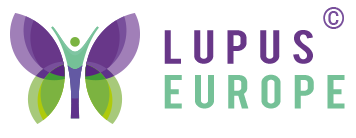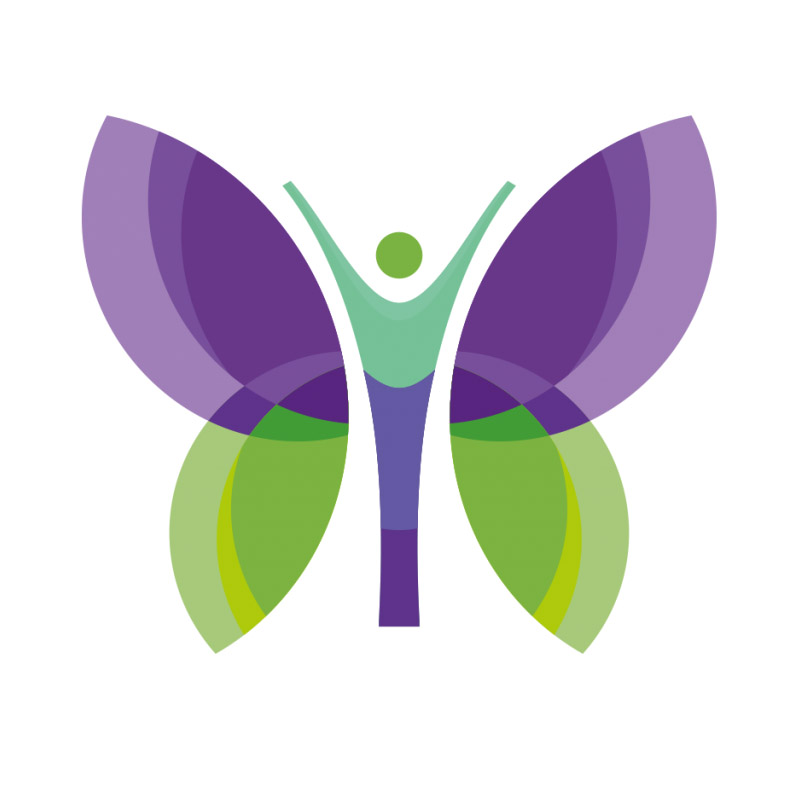| The 22nd EULAR Annual European Conference of PARE took place in the stunning, historical city of Prague in the Czech Republic 5-7 April 2019 with over 120 delegates. PARE ‘People with Arthritis and Rheumatism in Europe’ forms an integral role at EULAR ‘The European League Against Rheumatism’. The presentations and workshops at the PARE Conference were developed to inform, empower and motivate EULAR member organisations of PARE. The event was a dynamic opportunity for delegates to learn from experts and each other. The organisations represented were for those with rheumatic and musculoskeletal diseases (RMDs). Some attending were from long established and experienced organisations and others were more recently formed, but were equally keen with new ideas ready to flourish. All representatives were selected because each have an interest in developing one or more of the topics covered in the programme. The aim being to share what was learned and for those organisations to benefit from the information and contacts gathered at the PARE Conference. A Young PARE workshop was underway on the first day, but apparently I did not quite make the age range criteria. The cheek of it ! Workshop leaders headed up the discussion on ‘Transitions in Life – Implications for Young People with RMDs.’ The Best Practice Fair The LUPUS EUROPE Abstract The LUPUS EUROPE Poster i. the large majority of people experiencing symptoms that limit ability to carry out daily activities Pictures bordered the display denoting the main lupus symptoms from joint pain, fatigue, organ involvement to headaches and hairloss. The target in the crosshair was shaped by more pictures of the lupus journey with medications, a body map of symptoms and European flags of all PAN members in the team. A central picture of an egg timer focused the concept of time being of the essence. The speeding up of the research process by patients being at the forefront from the inception of projects. The Plenary
There were presentations, further welcomes and panel discussions by the Standing Committee, Young PARE and various Czech Rheumatological Associations. The presentations focused on the EULAR Strategic Goals 2018-2023 on Advocacy, that by 2023, EULAR’s activities and related advocacy will have increased participation in work by people with RMDs. This included the success demonstrated by research on ‘The Effect of Anti-TNF Therapy on Work Productivity and Activity Impairment in Patients with RA, AS and PsA over One Year – Real Life Data from the Czech Biologics Registry ATTRA from the Institute of Rheumatology in Prague’. In addition, the runner-up of the Edgar Stene Prize 2019, Francisco Carreira Roca gave an impassioned speech about his personal journey as a trained architect and then becoming wheelchair bound in his essay ‘My Ideal Employer – Work without barriers for people with RMDs: Work Right’. Delegates with lupus attending PARE
At the close of events on Friday in the Plenary Room Dieter Wiek, Vice President of the PARE Standing Committee, made a request to the plenary on my behalf. He asked if any delegates attending with lupus would like to come together for a meet and greet with a photo call at the spectacular entrance of the Don Giovanni Hotel. We found there were seven of us attending from Sweden, Slovakia, Portugal, Poland, Belgium and the UK including the PARE President, the Chair of Young PARE, original and new PAN members, plus current and former LUPUS EUROPE Trustees. Workshops A. Workshop: Working with Policy Makers, Employers and Trade Unions: a workshop to support the advocacy activities of PARE organisations at national and European levels B. Workshop: Effectively Designing and Presenting a Poster
We created a dynamic title asking how researchers involve patients and carers. It had a flow of direction with circles highlighting the background, aims, methods, results and conclusions denoting many of the main points with diagrams. The conclusion was placed directly in the centre to focus attention with a smiley face to illustrate a positive outcome had been reached. There was even a QR code to keep a track of how many would be downloading the poster directly. In conclusion it was found it is not as easy as it looks, planning is key, having a clear brief is helpful, as is knowing your audience, teamwork is vital and there is no right or wrong way to design a poster. C. Workshop: Working with Pharmaceutical Companies D. Workshop: Occupational Rehabilitation: how can organisations of PARE support people with RMDs to work E. Workshop: How to Care for Informal Carers’ Needs: what support can organisations of PARE offer ? F. Workshop: Finding the Right Job at the Right Time (Young PARE) G. Workshop: Entitlements and Knowing Your Rights at Work (Young PARE) H. Workshop: The Value of Work: asking the right questions was also live streamed on the internet. Sightseeing and Gala Dinner |
EULAR PARE 2019, the Highlights
Live Twitter Feed
Yes! #LupusGPT is a multilingual AI tool that delivers dr & patient-validated results from selected sources.
Also #EasyLupus! A simplified version that makes info even more accessible by breaking down complex medical terms into easy-to-understand language https://easy.lupusgpt.org/
It was an absolute pleasure to speak with @Jeanette_Lupus of @LupusEurope about the work I am undertaking on abnormal immunometabolism as a possible cause of fatigue in #SLE at the @SLEuroSociety meeting earlier this year 🧪
@LupusEurope thanks for pointing this out. Many to most #lupus #SLE patients with #Sjogrens do not even know they have it. A study in a major rheumatologic clinic showed that this was the fact in patients with MCTD. I highly suspect the same would occur in a lupus study
July
🚨All the updates you want about #pregnancy in #rheumatology are in this @TheLancetRheum series 🤰
🎧Do not miss the related podcast
@KarenS_LDN @nelson_piercy @drbags71 @Graversgaard_C @Jeanette_Lupus @LupusEurope @IonaThorne @EMEUNET @TadejAvcin
Listen to our latest podcast🎙️
Deputy Editor, Sophie Woolven, spoke to Karen Schreiber (@KarenS_LDN), Ian Giles, and Angela Tincani about the Pregnancy and Rheumatic Diseases Series
‼️Today is #WorldSjogrensDay, a chronic autoimmune disease that affects 14-17.8% of lupus patients.
💁♀️ Although Sjögren's is a systemic disease that goes far beyond dryness, dryness remains a frequent, significant & disabling symptom.
➡️ Follow @SjogrenEurope to know more
🩺 Calling doctors:
#EasyLupus is the easyread version of #LupusGPT. Made to give easy & valid info on #SLE for patients in many languages. Currently in beta & being tested.
Go to: https://easy.lupusgpt.org/ to try the tool & e-mail secretariat@lupus-europe.org with any feedback!
✅ Happy to report that 100+ #Lupus experts from @ERN_RECONNET @SLICC and @SLEuroSociety have participated to the FINAL stage 🏆 of the taskforce for rare #SLE manifestations. In just a few weeks (data analysis) we'll have clear recommendations for these complex manifestations 👍
Live Facebook Feed
3 days ago
🌍 Socio-economic factors can significantly impact the health outcomes of people with SLE, particularly those from economically or socially disadvantaged backgrounds. A multitude of issues such as limited access to transportation, low health literacy, insufficient healthcare resources can influence various aspects of access to healthcare, and affect the management and outcomes of diseases like #lupus
👨⚕️ In this insightful YouTube video, Dr. Daniel Guimarães de Oliveira discusses the crucial need for holistic care approaches that take into account a person's wider context, including these non-clinical factors.
🎥 Watch the video now to learn more about these insights and the need for tailored healthcare strategies that address a person’s broader context.
www.youtube.com/watch?v=RT2Qtllx2-s
... See MoreSee Less

View Comments
- likes love 17
- Shares: 3
- Comments: 13
13 CommentsComment on Facebook
Daniel Guimarães de Oliveira - Imunologia Clínica
That's true! Many people with problems are compelled to stop their cures because they do not have the money
I was never a person who believe in herbs as a means of treatment, now I know better, herbs has more efficiency than any pharmaceutical medicine. I suffered from FND with no results from pharmaceutical medicines, but after using herbal medicine from Dr Ehota I got cured of my ailments. I will advice you to try herbal medicine as well Contact Dr Ehota Dr Ehota
4 days ago
‼️Today is #worldsjogrensday, a chronic autoimmune disease that affects 14-17.8% of #lupus patients.
💁♀️ Although Sjögren's is a systemic disease that goes far beyond dryness, dryness remains a frequent, significant and disabling symptom.
➡️ Follow Sjögren Europe to know more.
... See MoreSee Less

5 CommentsComment on Facebook
I know
Truly, natural remedies do work. If they didn't, we wouldn't have used them for thousands of years. And, pharmaceutical companies wouldn't be studying plants, taking extracts of them, and patenting them as drugs.this is not a claim or lies I was totally cured from herpes and neuropathy by Dr osewen, His remedy is surely the best. I suggest you try him out if you are having any health challenges and also get cured too, give him a try 👇👇 www.facebook.com/114932024817210
Meeting dr edaghonghon here on Facebook has really been one of the best time of my life. After years of suffering, I am finally cured permanently from HSV1 and 2, thanks doc God bless you www.facebook.com/pg/Dr-Edaghoghon-107119921039442/community/ OR Whatsapp wa.me/2349056731866
1 week ago
🪫 Fatigue is one of the most common and challenging symptoms of lupus. Even in remission, this persistent issue can continue to affect the daily lives of those with lupus, highlighting the complex nature of this autoimmune disease and its symptoms.
🔬 On our YouTube channel, Dr. Chris Wincup shares groundbreaking research on lupus-related fatigue, presented at ELM. This study offers new insights into some of the possible underlying mechanisms of fatigue in lupus patients and potential therapeutic approaches.
🎥 Watch the full video to discover how these findings could potentially improve the quality of life for those living with lupus.
youtu.be/R5usgt-soE4?si=o426qWO-TP7WiMik
... See MoreSee Less

4 CommentsComment on Facebook
Wow, it would certainly make an enormous difference in our lives!!! Iron deficiency can be difficult to overcome because of stomach problems but it would certainly be worth trying to get rid of this perennial fatigue.
Natural🌿remedies do work. If they didn't, we wouldn't have used them for thousands of years. And, pharmaceutical companies wouldn't be studying plants, taking extracts of them, and patenting them as drugs.this is not a claim or lies I was totally cured from a deadly disease and neuropathy by Herbalist His remedy is surely the best. I suggest you try him out if you are having any health challenges and also get cured too, give him a try 👇👇 Dr Osabor herbal home
Herbal remedies is the most recent cure I can only imagine I thought it was lies when I saw some one testifying about Dr Osabor. I was so happy that I get back my health, and with the help of dr Osabor. I was cured you can also give a try 👇🏻👇🏻👇🏻👇🏻👇🏻👇🏻 www.facebook.com/Dr-osabor-Herbal-home-113980518216580/
2 weeks ago
👨⚕️ Don't miss Prof. Ian Bruce talking about the Systemic Lupus Erythematosus Damage Index (SDI) revision!
📈 The SDI is a tool designed to track lupus progression and impacts treatment decisions worldwide.
🔍 The revised SDI aims to enhance accuracy, include pediatric cases, and update outdated definitions, ensuring that every patient’s condition is comprehensively evaluated.
🎥 Do you want to explore these updates more thoroughly and understand what they mean for patients and healthcare providers? Click the link to watch the full video!
youtu.be/okAJvPAzIWg?si=6dwHxhoaqS0OJ7zm
... See MoreSee Less


0 CommentsComment on Facebook
Log In
Welcome to Lupus Europe. To join our pan-European community, please contact us.

 The LUPUS EUROPE Patient Advisory Network PAN Poster was presented to the EULAR President, Professor Johannes W.J. Bijlsma, Head of Rheumatology & Clinical Immunology of the University Medical Centre Utrecht Netherlands and the EULAR Vice President of PARE, Dieter Wiek from Germany.
The LUPUS EUROPE Patient Advisory Network PAN Poster was presented to the EULAR President, Professor Johannes W.J. Bijlsma, Head of Rheumatology & Clinical Immunology of the University Medical Centre Utrecht Netherlands and the EULAR Vice President of PARE, Dieter Wiek from Germany.



